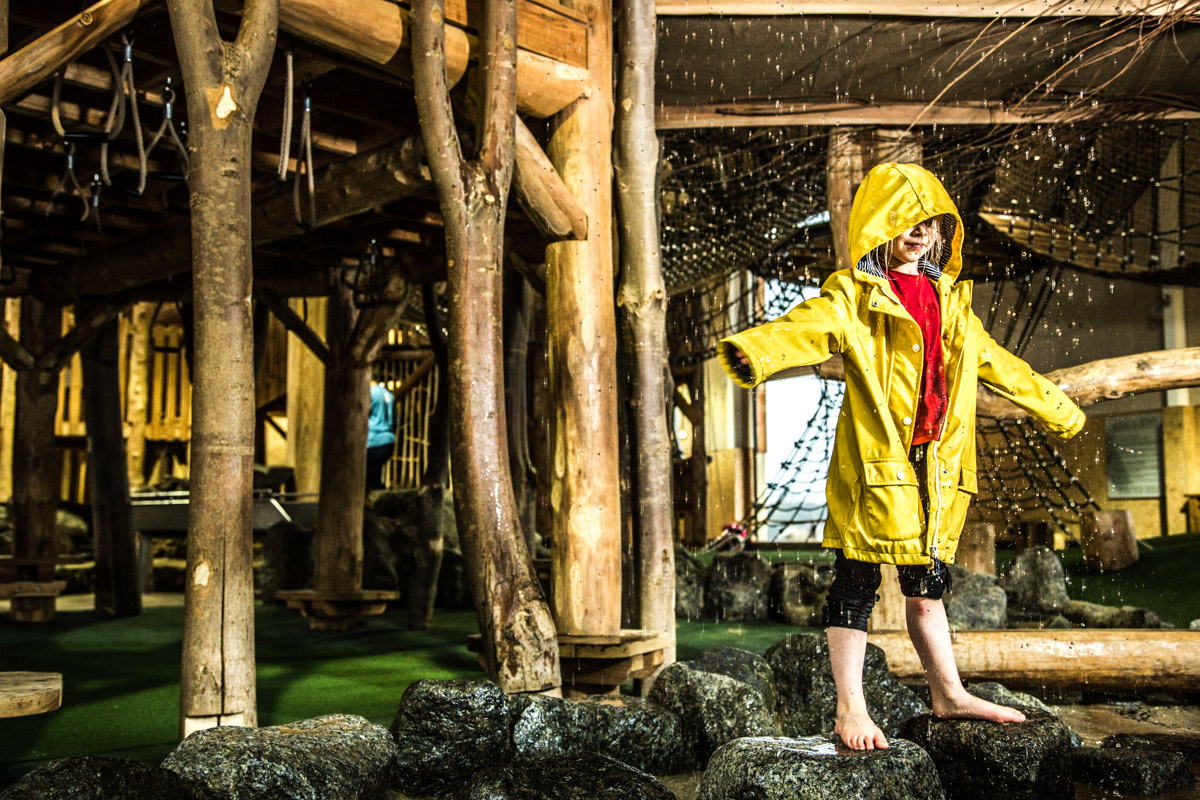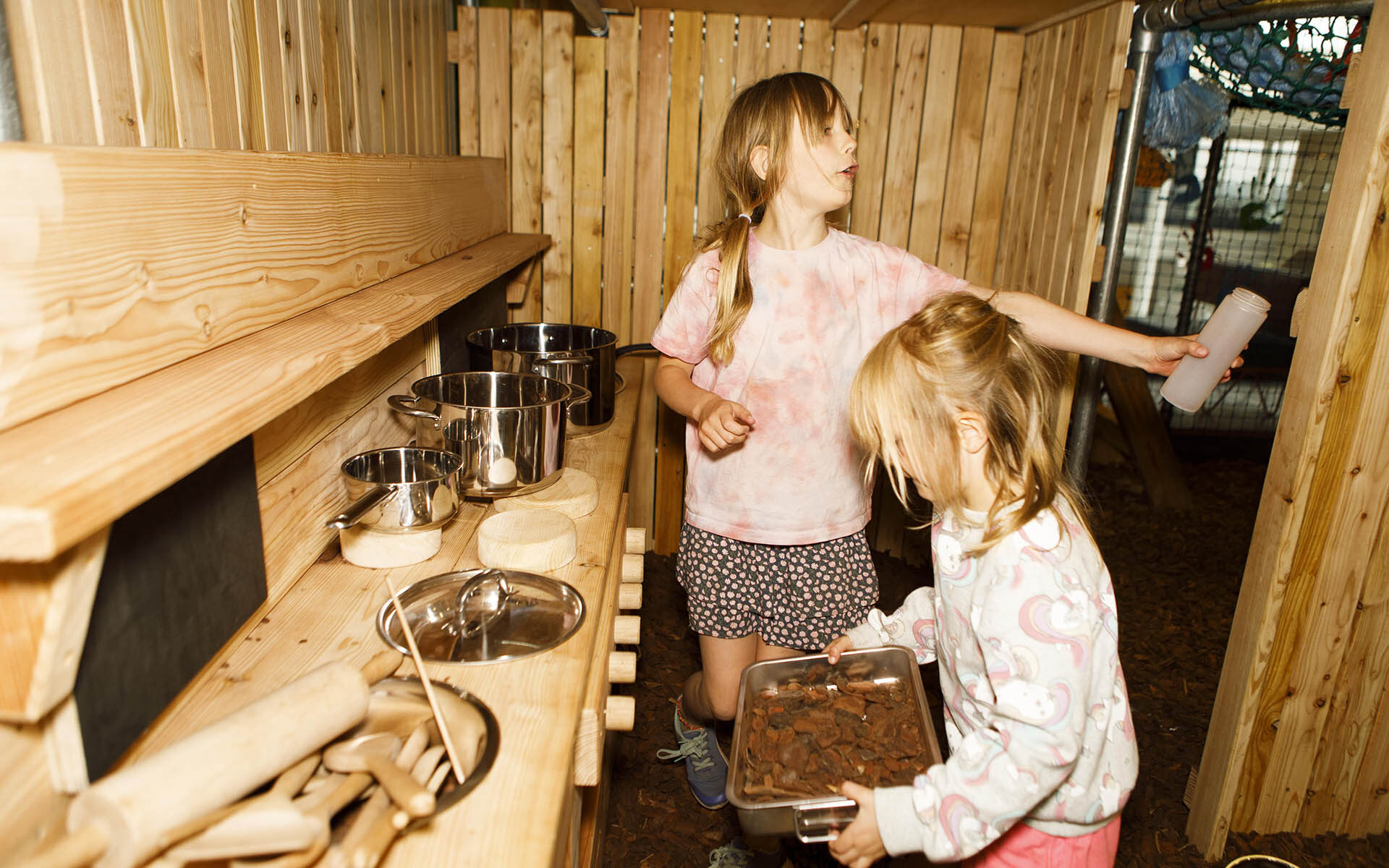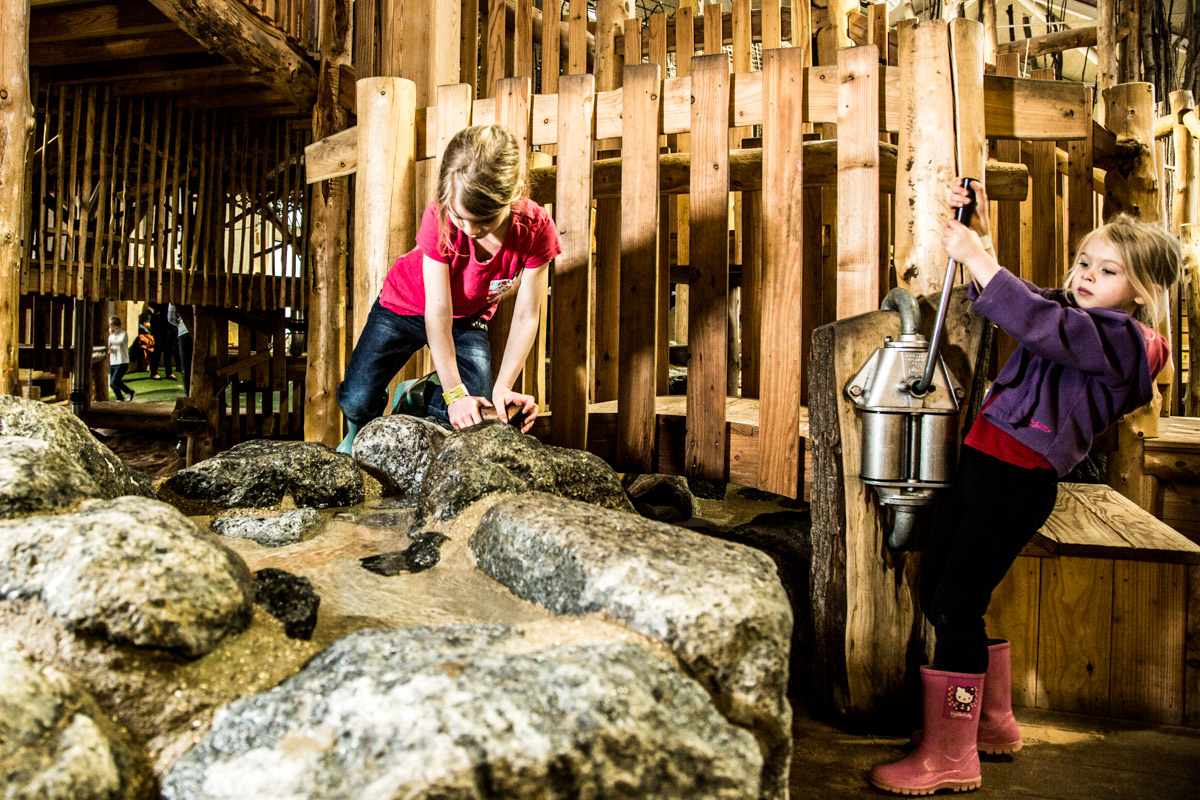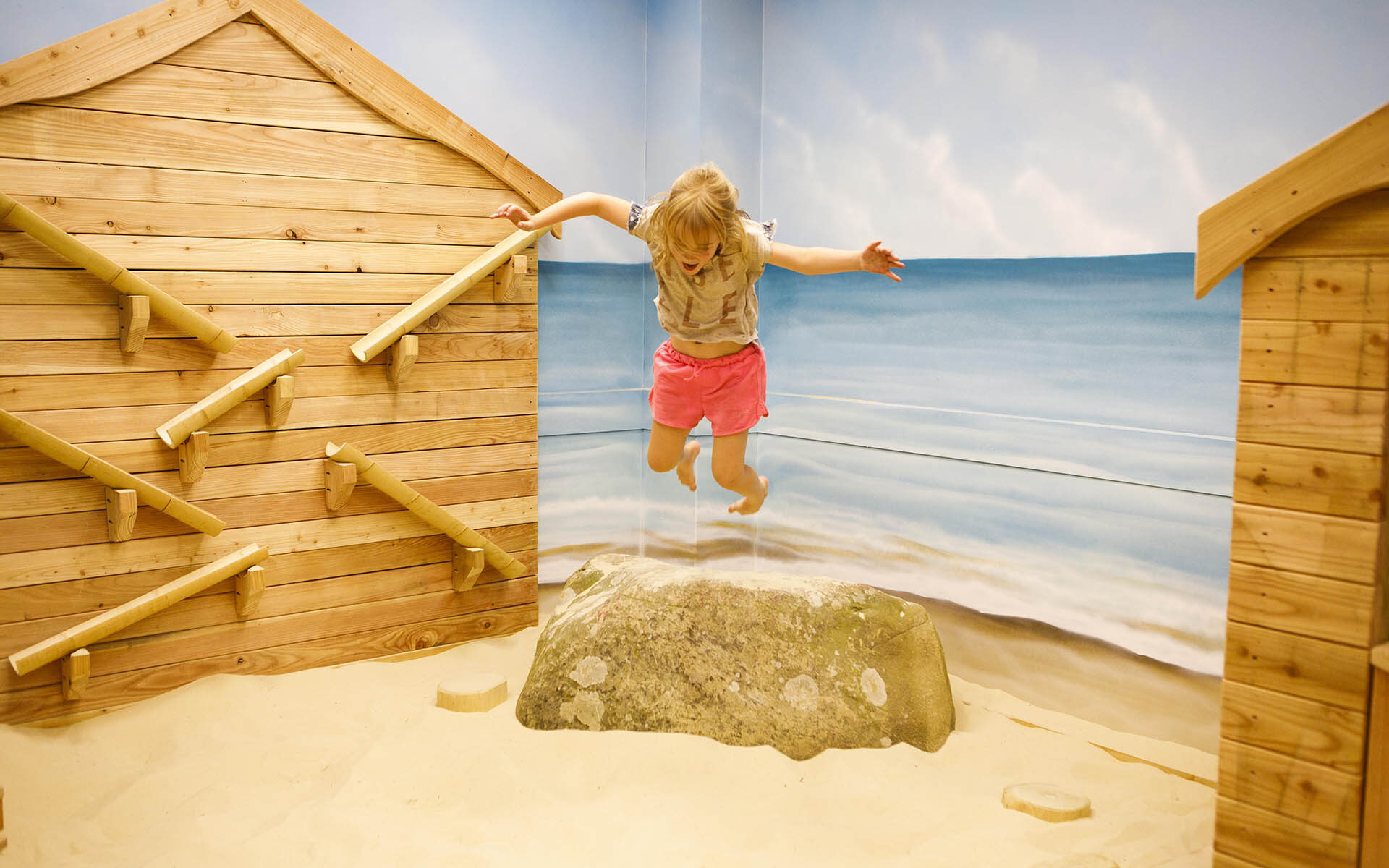
All-natural indoor play areas are becoming increasingly popular across the UK. The plastic cushioning and endless ball pits of indoor soft play are being replaced with wood, sand and stone to offer something a little harder than traditional ‘soft’ play. Not only are these nature-inspired playgrounds more sustainable, they recreate first-hand nature play for inner-city children who may not otherwise get chance to experience it.
In our first blog post, we’re talking about all-natural indoor play, how it differs from traditional soft play, and 6 ways that it benefits children.
Soft play refers to a play area where all the surfaces and equipment are covered in soft plastic padding, creating a safe space for kids to run riot without the risk of harm. Here in the UK, a typical soft play area includes brightly coloured climbing frames, padded slides, rope bridges, ramps and ball pits.
There’s a time and place for all kinds of play, and don’t get us wrong – there is definitely a lot of fun to be had amongst the chaos of a soft play centre! But would it be fair to say that indoor soft play areas aren’t exactly a parent’s favourite place? They’re busy, garish and loud, and the sugary food and drink doesn’t help matters either. It’s actually quite common for both parents and children to crave a quieter, more peaceful place to explore and engage in naturally curious play.

We’ve found that when the traditional confines of a classic soft play environment are removed, children play a different way. Our nature-inspired take on indoor play is designed with lots of wood, sand, bark, buckets and chains. Upon first glance this may appear to pose more risk than a plastic-cushioned soft play. However, when children are faced with these real-world forms and materials, they slow down, take more care of each other and take more care of their surroundings.
A 1998 research paper found that children prefer the look of playgrounds that incorporate natural forms and materials. They’re also more likely to get involved, improve their spatial awareness and engage their imaginations in fantasy play skills. Our all-natural indoor play area contains hidden nooks and real-world forms to experience, encouraging children’s imaginations to run WiLD. Rest assured, we’re just as safe as a soft play. Our indoor play area is risk-assessed and signed off by independent RoSPA play safety experts every year.

Soft play is popular because it allows children to engage in activities that might pose more risk outside. Think: diving into ball pits, whizzing down slides and generally running riot with the peace of mind that any falls will be cushioned by a thick layer of plastic-coated padding.
The theory behind soft play is that it allows children to use and develop their gross motor muscle groups, such as their legs, arms and torsos, in a way that it might not be safe to do outside. Just like traditional soft play, we have plenty of ramps, bridges and a slide for children to engage their gross motor muscles. However, we like to think that without the plastic padding, children at our centre play in a more gentle, calm and imaginative way.

Playing is an important part of brain development, and nature-inspired play areas provide lots of opportunities for children to develop critical thinking skills like decision-making and problem-solving.
Play frames are full of twists and turns, encouraging little ones to decide if they should go left, right, up or down – acting on their own decisions in a way they don’t often get to do in the real world. This helps them to develop confidence in their own abilities and a sense of responsibility.
Indoor play centres are also full of problems and puzzles to solve. From navigating their way through the maze-like structure of a play frame, to getting hands-on with moveable parts – it all plays a vital role in the development of early critical thinking skills.

It’s a key part of how children learn to make sense of the world, but what is sensory play? Essentially, sensory play is any type of play that engages the senses – especially sight, sound and touch. Sensory play is an important part of child development, helping them to understand their actions, enhance their memory, learn how to hold and use things, and even learn emotional regulation.
The loud screams, blaring music and garish colours of traditional soft play centres can feel like sensory overload, leaving some children overwhelmed and less likely to reap the rewards of playtime. All-natural indoor play areas encourage a calmer and more mindful type of play. Of course kids make a noise when they get together and play, but the nature noises you hear playing at our centre definitely make for a more tranquil, less-daunting atmosphere for children.

Being let loose in an indoor play area is a great confidence-builder for kids. They learn to feel autonomy, freedom and confidence in their abilities as they find their own way through the space. Play areas are also a great environment for making new friends as children learn to share equipment, cooperate and play nicely together.
At our play centre we also recognise that not all kids are ready for independent exploration, and lots of children love to play with their grown ups! Our space is designed with collaborative and intergenerational play in mind, with plenty of seating and joint play opportunities throughout.

One of our mottos here at Wild Things is that play doesn’t have to be plastic to be fun! Plastic has long been synonymous with children’s play, but opting for more natural, sustainable play materials can benefit the planet, children’s health, and provide a more fulfilling play experience.
If you’ve ever watched your child dive into a ball pit and winced at the thought of all the germs that might be lurking in there – you probably won’t be surprised to hear that one survey found that 99.9% of the UK’s ball pits were contaminated! No shared play space will be free of germs, but wood is a much more hygienic material than plastic (killing bacteria in as little as 3-10 minutes after contamination). We also don’t know everything about the chemicals in plastic toys and play equipment, with one study suggesting that harmful chemicals are present in 25% of children’s toys.

If you’re looking for soft play in Bristol, why not try something a little bit different, more modern and enriching?
Our all-natural play area has been designed with lots of wood, sand and bark to provide a play experience more akin to outdoor adventure play than plastic soft play. Taking inspiration from the Montessori theory of play, we’ve also got a wooden kitchen to fuel imaginative play, and a crafty corner where kids can get hands-on with natural materials to make masks, medallions, puppets and rafts. It’s the perfect place for kids to explore, challenge themselves, build confidence and resilience.
Our play cafe also has a focus on local, ethically-sourced snacks, sandwiches, cakes and drinks, with barista coffees that parents are sure to appreciate!
Read our recent blog: The Ultimate Guide to Unforgettable Kids Birthday Parties in Bristol.
Find us in The Mall at Cribbs Causeway, right next to Nando’s!
Times & Prices